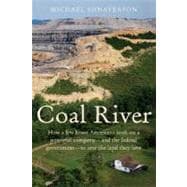
| Prologue: A Valley Under Siege | p. 3 |
| The Tip-off from Tony | p. 11 |
| A Brute Force Called Massey | p. 19 |
| Fighting Back | p. 36 |
| A Short-Lived Legal Victory | p. 59 |
| Stacking the State Supreme Court | p. 76 |
| The War with Washington | p. 95 |
| A School in Massey's Shadow | p. 128 |
| The Dead Souls of Smithers | p. 146 |
| Marching in the Valley | p. 164 |
| Massey's Unwelcome New Friend | p. 183 |
| Don's Terrible Year | p. 200 |
| Turning a Courtroom Loss Around | p. 210 |
| A Walk Through West Virginia | p. 218 |
| Back in Court Against the Corps | p. 236 |
| Don Goes for It All | p. 261 |
| A Ruling at Last | p. 276 |
| Epilogue: The View from Kayford Mountain | p. 295 |
| Notes | p. 299 |
| Acknowledgments | p. 307 |
| Index | p. 309 |
| Table of Contents provided by Ingram. All Rights Reserved. |
The New copy of this book will include any supplemental materials advertised. Please check the title of the book to determine if it should include any access cards, study guides, lab manuals, CDs, etc.
The Used, Rental and eBook copies of this book are not guaranteed to include any supplemental materials. Typically, only the book itself is included. This is true even if the title states it includes any access cards, study guides, lab manuals, CDs, etc.
Excerpted from Coal River by Michael Shnayerson
All rights reserved by the original copyright owners. Excerpts are provided for display purposes only and may not be reproduced, reprinted or distributed without the written permission of the publisher.